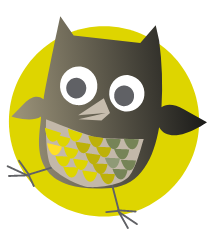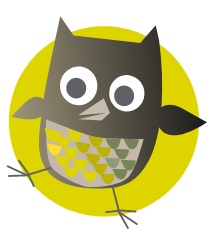Shapes are all around us and there are many ways you can start exploring them with your child. Learning to recognise shapes will help familiarise your child with different shapes in all sorts of contexts.
There are lots of fun and easy ways to get your child recognising and naming shapes, to give them a great start developing early numeracy skills. Here are some activities you can try at home and when you’re out and about.
1. Shapes on the dinner plate
Give your child different shaped food and ask them to name the shapes. Try slices of watermelon or pizza for triangles, sandwiches or crackers for squares, and apples or peas for circles. You can use the food to introduce informal mathematical language by asking your child to count how many sides or corners each food item has, or if the shape has straight or round sides.
2. Go on a shape hunt
Hunt for shapes around the house: ask your child to find circles (e.g. clock, plughole, plate), rectangles (e.g. TV, books), squares (e.g. windows, cupboards), and more. How many different shapes can they find in one room? Can they find small shapes and big shapes?
3. Spot the shape when out and about
What different shapes can your child spot when you’re out and about? Think about different shape road signs (circles, triangles, rectangles, and the octagon ‘stop’ sign); circular wheels on cars and bikes; square pavement slabs. Which shape is most common?
4. Shape of the day
Ask your child to choose a shape and then see how many times during the day you can spot it together. This can be around the house, when you’re outside, or even in books or on the TV.
5. Match the shapes
Cut out shapes from pieces of paper and lay out randomly on the table. Ask your child to match up all the circles, triangles, squares etc., naming the shapes as they go. Try using shapes of different sizes and colours. If your child feels confident, use a timer to see how fast they can match up all the shapes!
6. Trace the shape
Pick a shape and ask your child to trace its shape on a plate of flour, in sand, with a stick through soil, or on a pavement with a paintbrush and water.
7. Make pictures with shapes
Cut out different sized shapes from pieces of paper and see what pictures your child can make with the same shape, e.g. boats and butterflies from triangles and towers from squares. Now introduce another shape and see what picture your child can make by putting them together (e.g. a house from a square and a triangle).
8. Read stories featuring shapes
Help build your child’s confidence in recognising shapes during storytime. There are lots of fantastic picture books introducing shapes and patterns, which children will want to pick up again and again. We’ve highlighted two of our favourites from Oxford University Press below.
More from Oxford Owl
Books to support learning at home
All Aboard the Shapes Train
Illustrated by Sean Sims
Visit the park, the playground, the boating lake and the funfair to spot circles, squares, triangles, patterns and lots more!
Find out more >
The Perfect Fit (Pre-order)
Naomi Jones, James Jones
Triangle is trying her best to fit in, but she’s just not like the circles and the squares. So Triangle sets off to find some friends just like her.
Published March 2021.
Shape and Size Age 3–4
Progress with Oxford
This fun activity book will help your child to develop their knowledge of shapes and size. They will quickly learn the names of shapes, recognise their features and learn the vocabulary of measurement and dimension.
Find out more >
1st Steps with Numicon at Home Kit Age 3–5
Numicon
This kit has been designed for parents to help children’s maths during the Foundation Stage and early Key Stage 1, offering a series of fun and easy to play activities to encourage understanding about early number and arithmetic.
Find out more >
Shapes and Measuring Age 4–5
Progress with Oxford
This activity book will help your child to develop their knowledge of shapes and measuring. They will quickly learn the names of 2D shapes and their features, using mathematical language. They will also start to learn about measuring and comparing quantities and objects.
Find out more >






